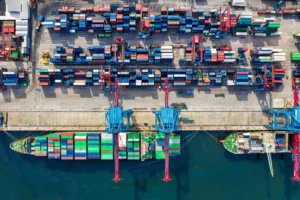Steel trading stands at the crossroads of industry and commerce, serving as a vital conduit for the global movement of this ubiquitous metal. As a cornerstone of modern civilization, steel is indispensable in construction, manufacturing, and infrastructure, making steel trading a linchpin of the global economy. Let’s embark on a journey through the dynamic landscape of steel trading, exploring its intricacies, trends, and enduring significance.
The Backbone of Modern Civilization
Steel, with its strength, versatility, and durability, forms the backbone of modern civilization. From towering skyscrapers to intricate machinery, steel is omnipresent, underpinning virtually every aspect of our daily lives. As such, the demand for steel is perennial, driving a thriving global trade network that spans continents and industries.
The Role of Steel Traders
At the heart of steel trading are steel traders, who act as intermediaries between producers and consumers, facilitating the movement of steel across borders and markets. Steel traders leverage their expertise, networks, and market insights to match supply with demand, optimize logistics, and ensure the efficient flow of steel from source to destination.
Global Trends Shaping Steel Trading
Several global trends are reshaping the landscape of steel trading. Economic growth, urbanization, and infrastructure development in emerging markets drive demand for steel, while technological advancements and environmental considerations influence production methods and product innovation. Additionally, geopolitical dynamics, trade policies, and currency fluctuations impact market dynamics and trade flows.
Key Players in the Steel Trade
The steel trade comprises a diverse ecosystem of players, including steel producers, traders, distributors, and end-users. Steel producers, ranging from multinational conglomerates to niche manufacturers, supply raw steel products to the market. Steel traders, operating in global hubs such as London, Singapore, and Shanghai, facilitate trade transactions, while distributors and end-users transform raw steel into finished products for consumption.
Navigating Challenges and Opportunities
Despite its resilience, steel trading faces challenges such as overcapacity, price volatility, and regulatory constraints. However, these challenges are counterbalanced by opportunities arising from digitalization, supply chain optimization, and sustainable practices. Forward-thinking steel traders embrace innovation, forge strategic partnerships, and adapt to evolving market dynamics to thrive in this dynamic environment.
Conclusion: Charting the Course Ahead
As we navigate the dynamic landscape of steel trading, one thing remains certain: the enduring significance of steel as a vital enabler of progress and prosperity. In an ever-changing world, steel traders play a pivotal role in connecting producers and consumers, driving efficiency, and unlocking value across the global steel supply chain. With resilience, agility, and innovation, steel trading will continue to chart the course ahead, shaping the future of industries and economies worldwide.




